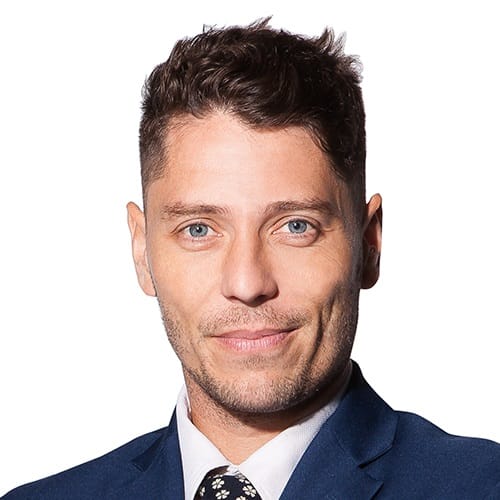Local tears, rotting filth and a green tide: How Boracay will get clean again
In the final part of Jack Board's investigation into the implications of Boracay's closure, he finds out how decisive action to clean up the island is already having an impact on residents.
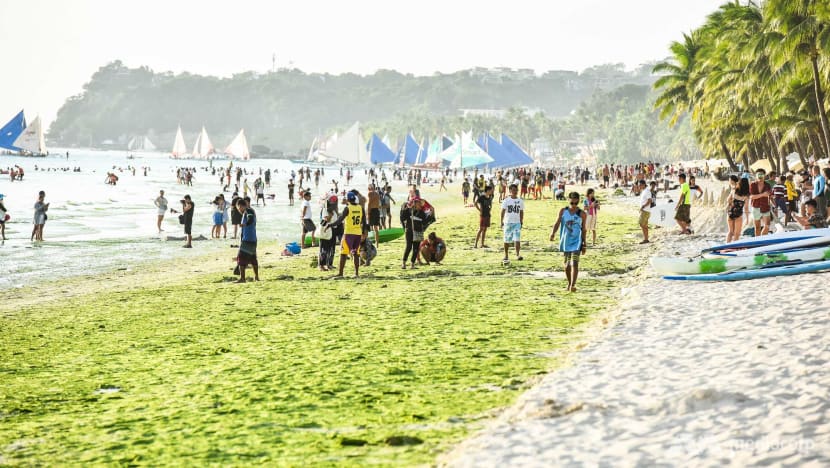
A thick green stripe of green algae is a blemish on Boracay's white sands. (Photo: Jack Board)
BORACAY, Philippines: Jennie Aguila breaks into tears almost immediately as she tries to explains why she is being forced out of her home.
Aguila and her family have lived in a simple house in an inland part of the tropical island Boracay since 2005. Just days after Philippine president Rodrigo Duterte announced a six month closure of Boracay for urgent environmental rehabilitation, a letter appeared spelling imminent eviction.
According to the notice issued by the Department of Environment and Natural Resources (DENR), the house is built on a wetland.
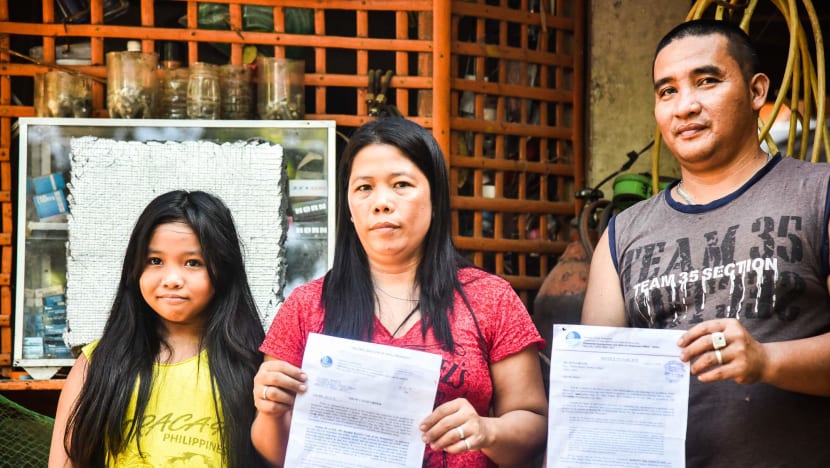
“We had no idea,” she tearfully explained. “Ever since we lived here, no one inspected our place and declared this as a wetland.”
Authorities have illegal dwellings squarely in their focus as a means of restoring the long-suffering forests and wetlands of the island. Aguila is far from alone in receiving the dreaded legal notice: The DENR has already identified more than 1,000 structures that it believes break the law.
“Of course I’m worried. We have nowhere to go,” she said. “When I asked them if they will give us relocation, they didn’t say anything. They gave no promises.”
Action to rejuvenate Boracay has been swift and without apology. Houses are being demolished, businesses are being shuttered and the tourist trade is being paralysed.
An instant trigger has been pulled on an issue that has long been festering.
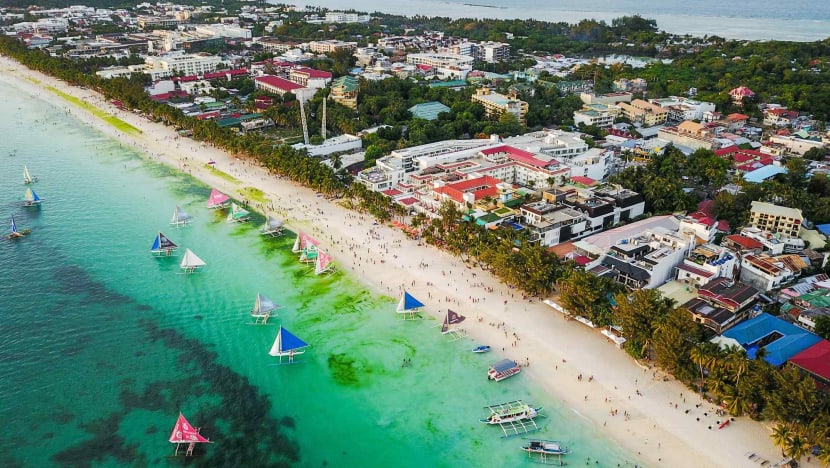
Wastewater has been pumped directly into the sea, buildings have encroached onto the beaches and sewage systems are overloaded and dysfunctional. With more than two million visitors to Boracay last year, the island is generating vast amounts of trash - 90 to 115 tonnes per day - and only a fraction of it is being hauled away.
Not surprisingly, the island’s dumpsites are straining from waves of plastic and the dregs of a heaving tourism industry. Stray dogs prey on coconuts sitting with straws poking out and maggots envelop fast food packets.
Boracay is slowly suffocating on its own filth.
“If we do not address it we fear that we will be reaching a state wherein we cannot recover Boracay,” said DENR under secretary Jonas Leones.
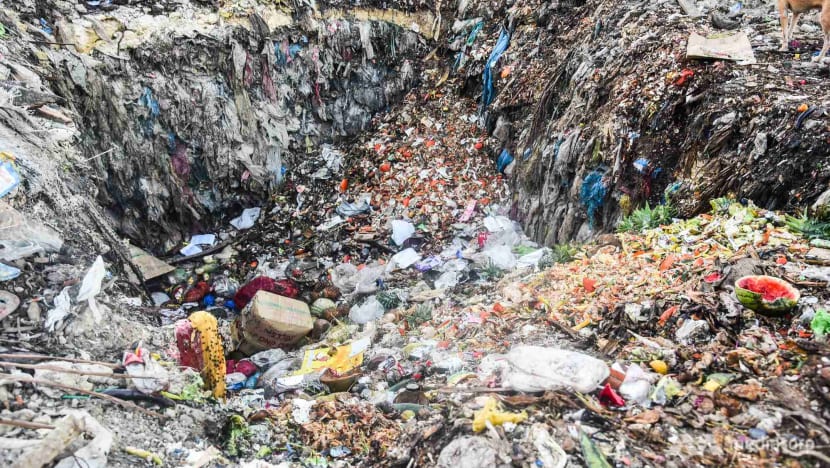
THE GREEN TIDE
The symbol of Boracay is its scintillating white beaches that stretch for kilometres and which continue to provide aesthetic wonder to visitors. And despite the pressing crowds and constant hum of electronic music and the cries of eager vendors, for most people, the dire state of the island is out of sight and mind.
The sand is still white - relatively - and water is still clean - apparently.
But a thick trail of green slime at the foot of the gentle waves, wrapping about the feet of playing children and foreign tourists wading off their yachts is a reminder of the delicate ecology here and how it is being strained.

The locals do not believe the “green tide” is a problem. Most adhere to an old belief that it is a natural phenomenon and that the algae itself simply turns into sand.
A report completed by the Japanese International Cooperation Agency (JICA) in 2015 came to a more sinister conclusion: That untreated waste seeping into the sea was degrading water quality and spawning bigger algae blooms.
The report also noted that unregulated diving and snorkelling was causing severe coral losses and wild commercial development was leading to sand erosion.
While there is a general acceptance that Boracay needs to recuperate, most local stakeholders still disagree with the drastic method - shutting the island down entirely. But Leones says without doing so will jeopardise the entire process.
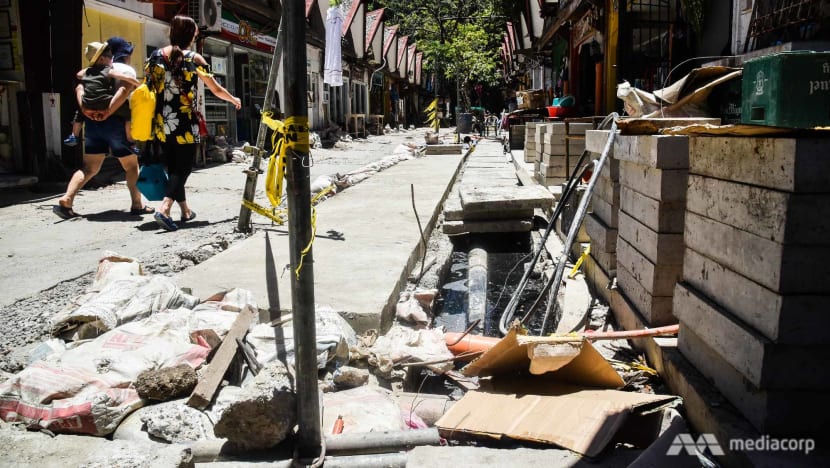
“We believe we cannot address this concern if we do not close down Boracay. If we will implement or address these problems without closing Boracay it may really take a longer time,” he said.
NO FARMERS HERE
President Duterte in his proclamation to close Boracay suggested sweeping land reform - essentially a “return to the land” policy of converting the island back to agriculture.
Farmers, who for years have mostly not operated at all on Boracay, might be given land to cultivate. It is a plan that has been met with skepticism.
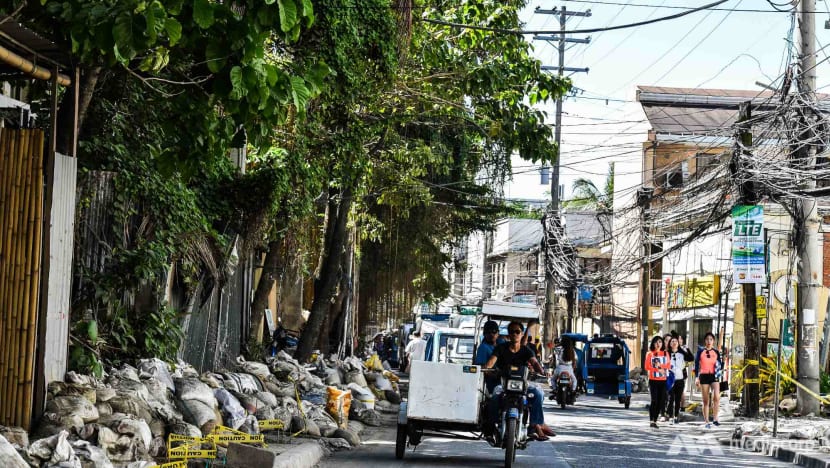
“You cannot grow plants here,” said vegetable vendor Gilda Baltazar. She grows produce on the nearby mainland.
“Back in my town, we even have to buy land that is conducive to planting vegetables. You just don’t plant anywhere. Here, plants may live but it’s like planting in a desert.”
Nevertheless, the DENR will follow the president’s instructions to assess land for a use other than tourism, to the chagrin of the local government.
“I’m not sure of his motivation but that’s the reality on the ground, said Rowen Aguirre, executive assistant to the mayor. “There are no more farmers here and I mean if you want drivers of economic growth then we should look at how you can use best the land that you have.”
Is that through agriculture? “Ah, definitely not,” he said.

Regardless of the future use of Boracay’s land, Leones says no leniency will be shown to the likes of Aguila and their supposed environmental offenses in forests and wetlands. But there may still be some flexibility about the future arrangements for evictees.
“Sometimes government is compassionate also to the plight of these people,” he said. “We cannot just evict them without ensuring where they can go. Basic amenities should be there.”

For Aguila, who is not against the rehabilitation of the island, it is an untenable - and emotional - scenario.
“The people here – not just me – they’re really in a pitiful state. If we will be affected by the closure, that’s okay, we will find a way to live through it,” she said.
“But ordering us to leave, that’s the one we cannot accept.”
This is the fourth part of Jack Board's in-depth look at the temporary closure of Boracay. Read part 1 and part 2 and part 3.








